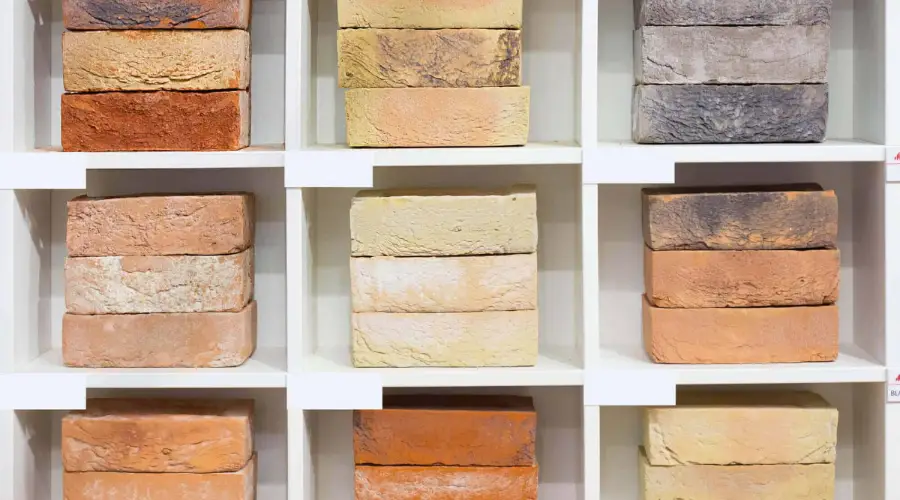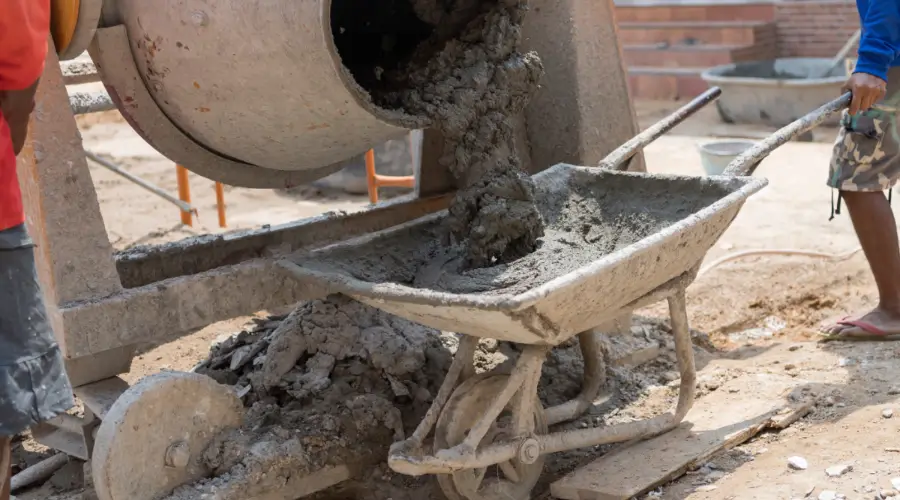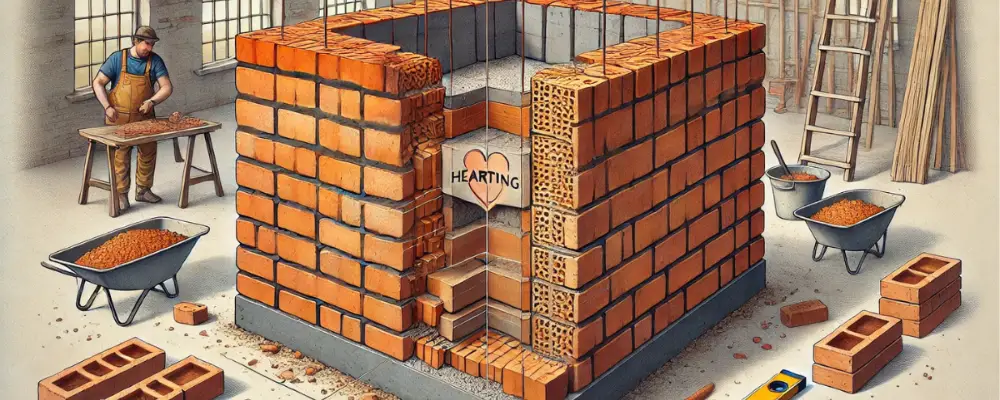Brick masonry is a construction technique that uses bricks and mortar to construct structures of high durability and aesthetic beauty. Hearting is one of the terms or techniques used in the masonry process that is generally applied in thick walls. It provides numerous benefits, and this blog will help you understand its importance and construction process in detail.
What is Hearting in Brick Masonry?
Hearting in brick masonry refers to the interior portion of the brick wall that is placed between the facing and backing bricks in a wall. It is mainly used to provide the necessary structural support, load distribution, and thermal insulation to the structure.
Construction of Hearting in Brick Masonry
Preparing the Hearting Materials
Select the materials that are required for hearting, such as full bricks, brickbats, concrete blocks, or rubble stones, depending on the structural requirements and availability. Prepare the mortar to bind the hearting materials together.
Laying the Facing Bricks
The facing bricks are laid first, based on the types of bond, either along the stretcher or header bond, depending on the aesthetic and structural needs of the wall. The bricks used in the exterior faces of the wall should be of high quality.
Laying the Backing Bricks
The backing layer of the wall is then constructed using standard bricks forming the inner face of the wall. The backing bricks are laid in a simple bonding pattern, as they are not exposed to view.
Placing Hearting
After installing the facing and backing, the core portion between them is filled with hearting materials— full bricks or brickbats. The hearting is laid in a staggered pattern, and mortar is applied between the hearting materials to create a solid bond and enhance load distribution.
Compaction
After filling the core, the hearting materials are compacted properly, by tapping the bricks lightly or using a mechanical vibrator to eliminate voids and ensure the solidness of the wall. Plumb bob and spirit levels are used to ensure that the wall constructed is uniform throughout the surface.
Curing
After constructing the wall using hearting, it is important to keep the structure idle under the moisture for at least 7 days to completely cure and achieve the necessary strength and stability.
Types of Bricks and Mortar Used
Bricks/Blocks

Full Bricks
Standard full-sized clay bricks or concrete bricks are used as hearting materials in brick masonry, to enhance the strength, stability, load-bearing capacity, and durability of the wall.
Brick Bats
The cut or broken pieces of the bricks, also known as brickbats, are most commonly used as the hearting materials, as they are economically and effectively used from the waste and leftover materials.
Concrete Blocks
Concrete blocks, either hollow or solid, can be used as hearting material in thicker walls. They provide high strength and thermal insulation to the structure.
Mortar
Cement Mortar

Cement mortar made with a mixture of cement, sand, and water is commonly used for hearting in brick masonry. They provide high strength and durability and are suitable for modern construction.
Lime Mortar
Lime mortar made with lime, sand, and water can be used for the hearting of bricks, especially for traditional buildings. They provide flexibility and workability and protect the structure from cracking and shrinkage.
Other Fillers
Stone Fill
The rubble or irregular broken stones can be used for hearting as they are highly durable, strong, and provide strong support to structures.
Key Considerations for Hearting in Brick Masonry
Material Selection
The hearting material should be free from defects and possess the necessary strength and thermal properties. The mortar should be suitable to complement the bricks used and should be highly durable.
Resistance
The chosen hearting materials should be highly resistant to thermal and acoustic forces. Hollow blocks are ideal for resisting both thermal changes and acoustics.
Cost
The cost of the materials should be considered when determining suitable options. Full bricks or brickbats could be effective for hearting at an economical price.
Alignment and Bonding
Proper alignment and bonding between the hearting material and the outer layers are essential for maintaining structure stable throughout the wall. Any weaker bonding could weaken the structural integrity.
Benefits of Proper Hearting in Brick Masonry
- Proper use of hearting materials helps in distributing the loads evenly across the wall, preventing the structure from cracking or failure.
- It provides resistance against external factors such as moisture, temperature fluctuations, freezing conditions, and other extreme climatic conditions.
- The thermal insulation properties maintain room temperatures while reducing energy costs spent on energy associated with heating and cooling of buildings.
- The thick wall prevents water ingress, and the effective use of hearting materials minimizes moisture absorption and efflorescence.
- It is naturally fire-resistant, and this characteristics enhances protection against fire accidents.
- Brick masonry with proper hearting provides a uniform appearance on facing surfaces, enhancing the overall aesthetic appearance.
- High load-bearing capacity combined with resistance properties enhances durability while reducing maintenance and replacement costs.
Applications of Hearting in Brick Masonry
- Hearting can be used to construct both load-bearing and non-load-bearing walls due to its balance between strength, resistance, and aesthetics.
- It serves as fire walls to prevent damage from all sorts of fire accidents.
- Its high stability makes it suitable for retaining walls that resist lateral earth forces.
- It can be used for historical restoration projects to maintain structural integrity.
Conclusion
Hearting in brick masonry is most commonly used for thick walls. Proper use of hearting enhances the structural integrity, durability, thermal insulation, resistance, and aesthetics. It requires proper planning and execution to achieve maximum efficiency while minimizing the maintenance cost and helps in maintaining the longevity of the wall.

